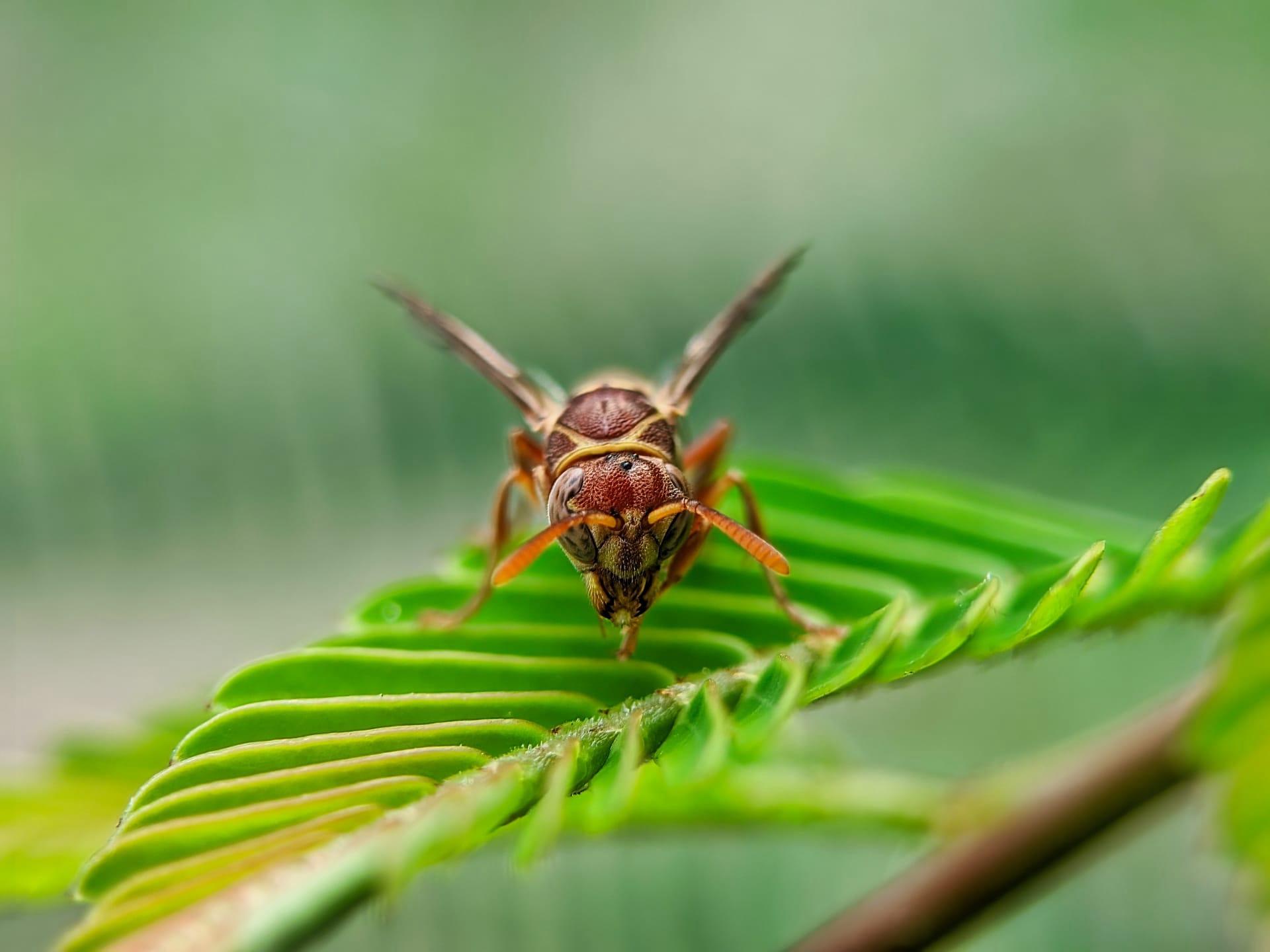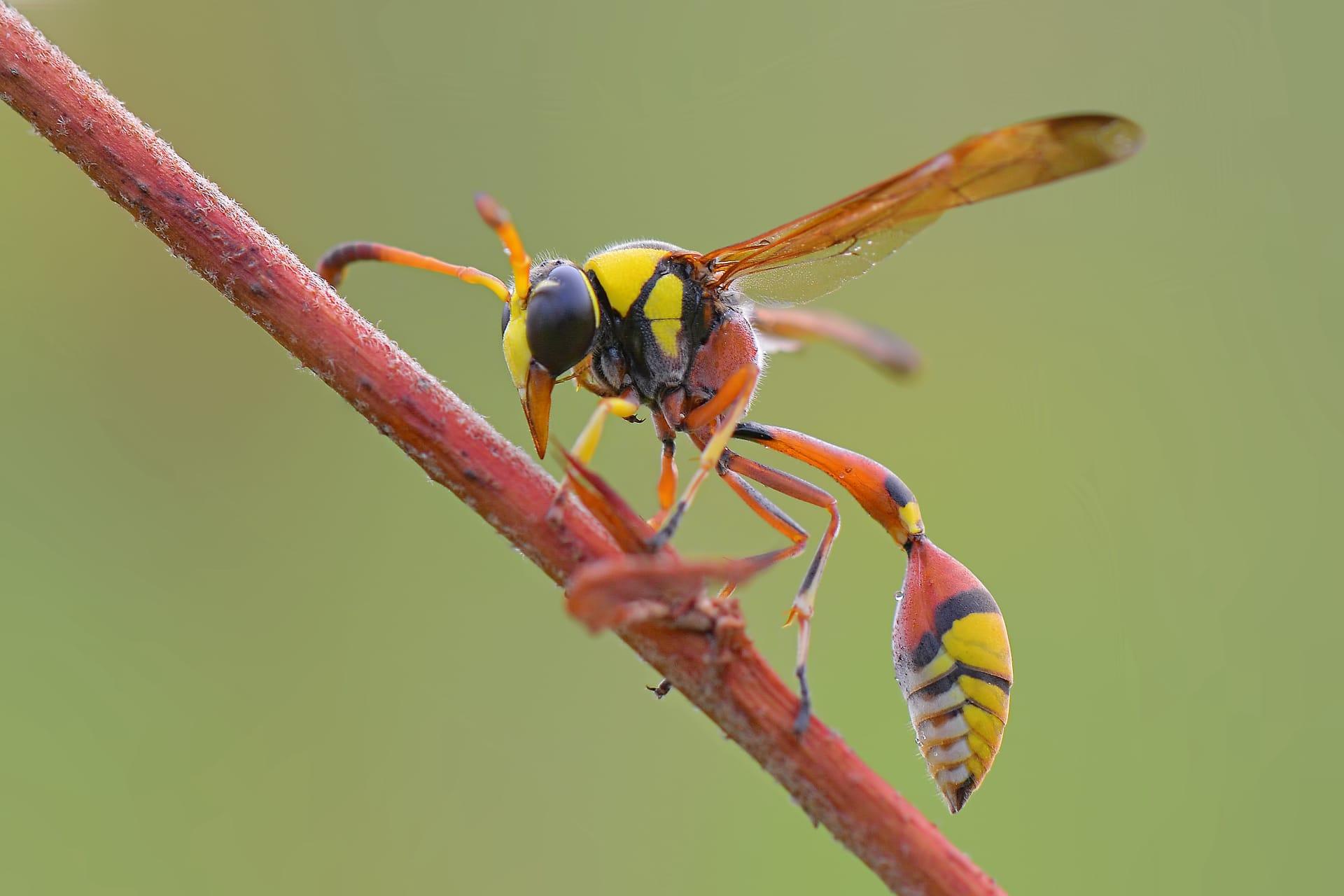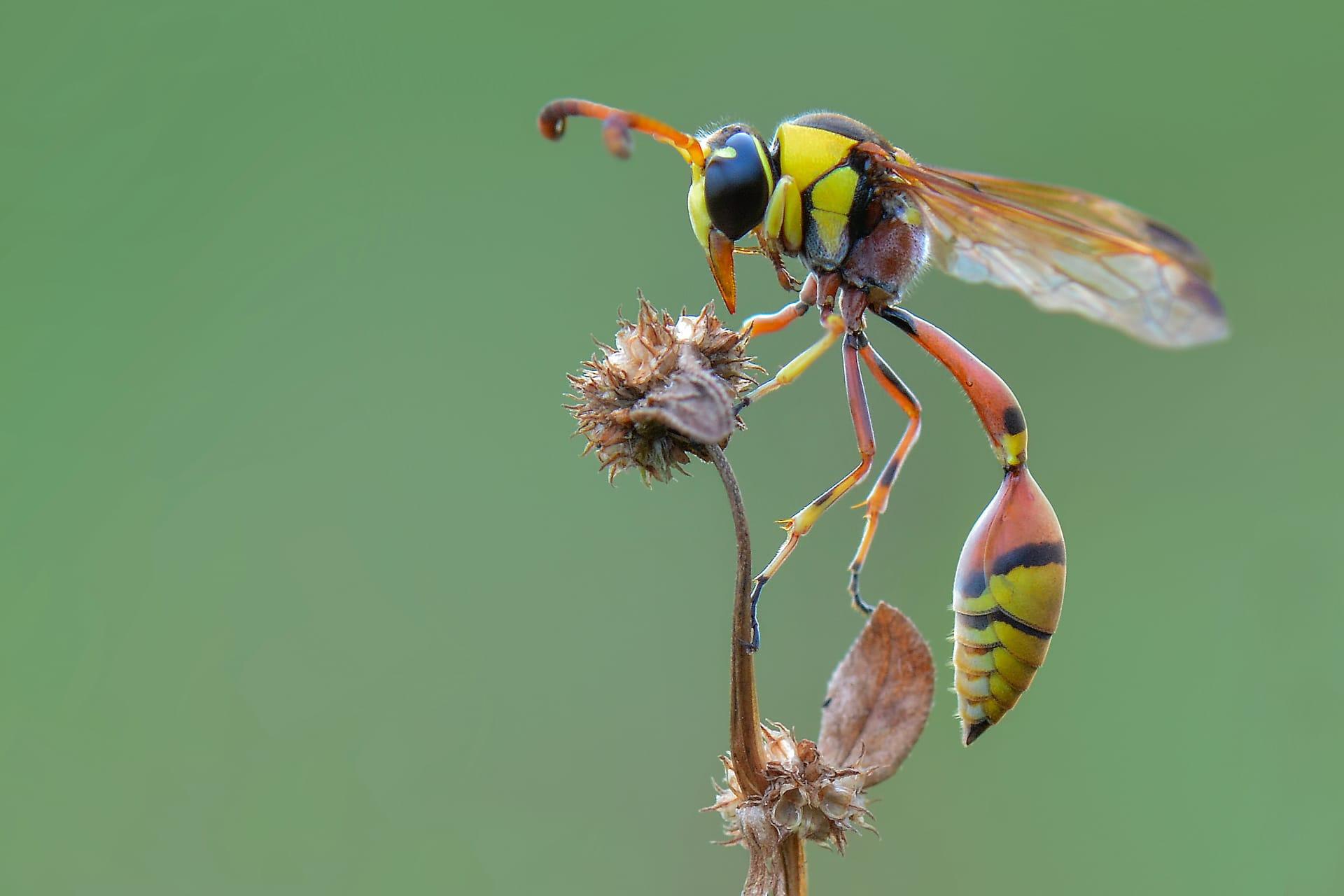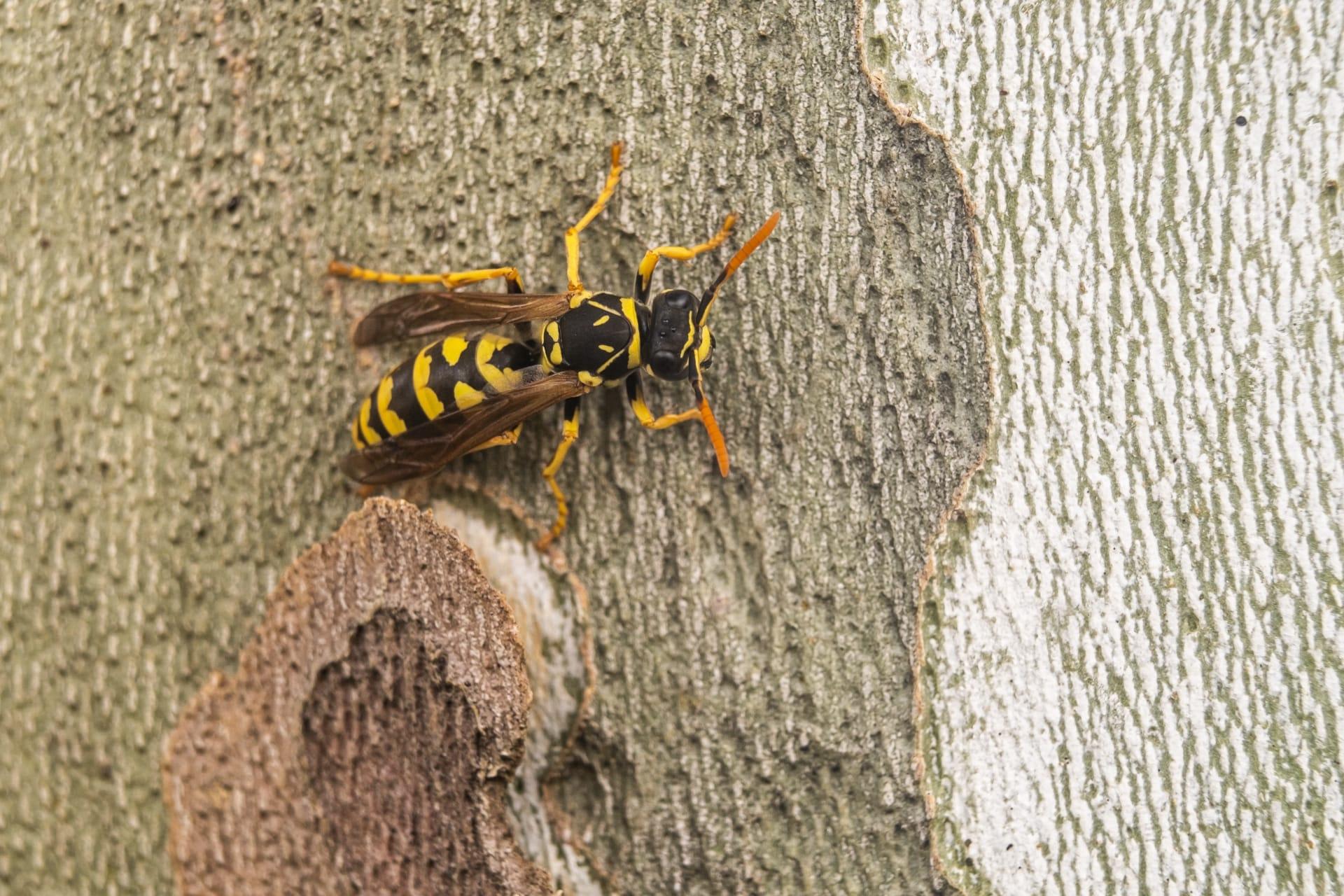1
Yellow jacket wasps are notorious for their aggressive behavior, especially when their nests are disturbed. Unlike bees, they can sting multiple times without dying. Their stings contain venom that can cause pain, swelling, and in some cases, severe allergic reactions. On average, a yellow jacket's sting measures about 12 millimeters in length, and they can inject up to 0.1 milligrams of venom per sting.
Another fascinating aspect of yellow jackets is their diet. These wasps are omnivorous, feeding on a variety of foods. They are particularly attracted to sweets and proteins, making picnics and outdoor events prime targets. In the wild, they feed on insects, nectar, and even fish. They play a crucial role in the ecosystem, not just as predators controlling insect populations, but also as pollinators due to their nectar-feeding habits.

2
Yellow jacket wasps exhibit a unique behavior known as "meat-waving." When they capture prey, they often wave it around to ward off other scavengers. This behavior is particularly noticeable when they are near human food sources. They are capable of dismantling their prey, carrying pieces back to their nests to feed their larvae. The larvae, in turn, produce a sweet secretion that the adults consume.
Interestingly, yellow jackets are not born as natural swimmers, but they can manage to survive in water. If a yellow jacket wasp falls into water, it can use its wings to ‘row’ and keep itself afloat. They've been observed paddling to the edge of a pool or pond to escape, showcasing their adaptability and resilience.

3
Yellow jacket wasps have a sophisticated communication system within their colonies. They use pheromones, chemicals that convey messages, for various purposes like marking food sources or signaling danger. When a yellow jacket stings, it releases a pheromone that alerts other wasps nearby, often leading to a group attack.
Their nests are marvels of natural architecture. Constructed from chewed-up cellulose material mixed with their saliva, these nests can house thousands of wasps. The structure is typically paper-like, with multiple layers and compartments. They prefer to build their nests in sheltered areas like attics, dense bushes, or underground, and a single colony can expand rapidly in size, sometimes housing over 4,000 wasps.

4
Yellow jacket wasps play a crucial role in wine production. They are attracted to the sugar in grapes and can cause significant damage to vineyards. However, they also contribute positively by preying on grape-eating insects and pests. In some regions, vintners consider yellow jackets both a pest and an ally in grape cultivation.
Another intriguing fact is their lifespan and colony cycle. A typical yellow jacket queen lives for about one year. She emerges in the spring, starts a new colony, and lays eggs throughout the summer. By late autumn, new queens and males are produced, who then leave the nest to mate. The old queen and the colony die off in winter, leaving the newly mated queens to hibernate and start the cycle anew the following spring.

5
Yellow jacket wasps have a unique facial recognition ability within their species. This ability is crucial for maintaining the social hierarchy in their colonies. They can identify different individuals based on subtle variations in face markings, which helps in distinguishing between nest-mates and intruders, ensuring the security of the colony.
Their impact on human health can be both negative and positive. While their stings can be dangerous to those with allergies, yellow jacket venom is being studied for its potential medical benefits. Researchers are exploring its use in treating certain diseases and conditions, indicating that these feared insects might also have a beneficial side to their notorious stings.